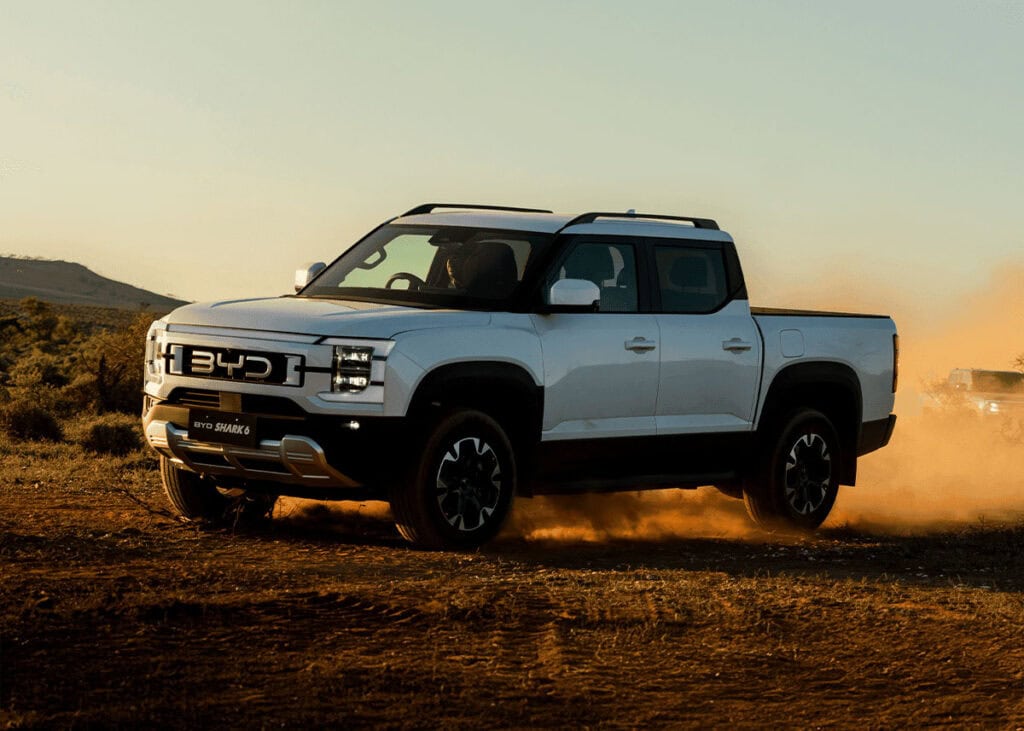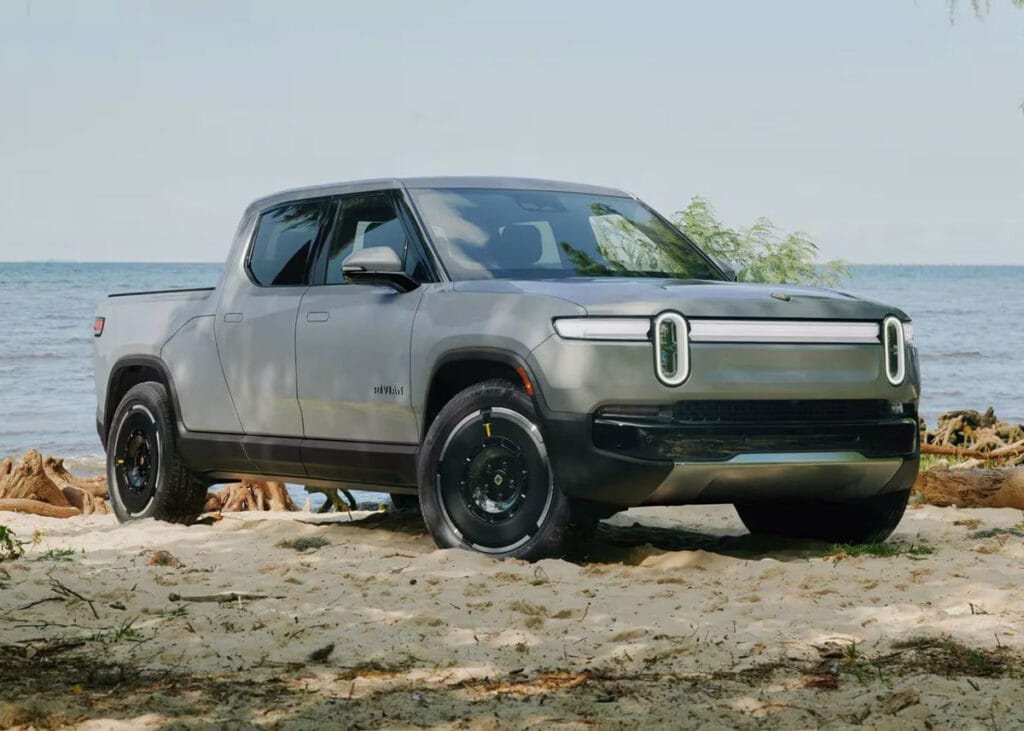With the automotive industry shifting toward electric vehicles (EVs), 2025 might be a year when electric four-wheel drives (4WDs) start to pick up sales in Australia. As more models become available, how practical are they beyond city commutes and weekend trips to the beach in a country known for its vast and remote landscapes?
Available Models in 2025
Currently, the BYD Shark is the only electric 4WD available in Australia. However, in 2025, the Ford F-150 Lightning and Rivian R1T will join the lineup, thanks to private importers making them compliant with local standards. The Tesla Cybertruck might also be an option if it gains compliance, and Tesla Australia had one touring cities in Australia during December 2024.
BYD Shark

The BYD Shark, priced around $60,000, is currently the only electric 4WD officially available in Australia. It features a battery capacity of 82 kWh and offers a range of approximately 420 km (80 km battery only) under WLTP standards. Designed with practicality in mind, it combines a rugged 4WD platform with advanced safety and connectivity features. While its range suits urban commuting and moderate off-road adventures, long-range trips in remote areas still require meticulous planning.
Ford F-150 Lightning

Expected to start from $169,000 through private Australian importers AUS EV, the Ford F-150 Lightning boasts a dual-motor setup, offering up to 580 hp and a towing capacity of 4,500 kg. Its battery options include a 98 kWh standard-range pack and a 131 kWh extended-range pack, delivering up to 515 km of range. With its large battery and American-built durability, it caters to towing enthusiasts and off-road adventurers, although its charging curve and sheer size might pose challenges in Australia.
Rivian R1T

The Rivian R1T, with an estimated price of $160,000–200,000, is a premium electric 4WD designed for serious off-road capabilities. It features a quad-motor configuration producing up to 835 hp and a towing capacity of 5,000 kg. The 135 kWh “Large Pack” battery offers a range of 505 km, while a 180 kWh “Max Pack,” exceeds 600 km. Equipped with features like an adjustable air suspension and off-road drive modes, the R1T is perfect for rugged adventures but requires careful range management when tackling remote regions.
Tesla Cybertruck

If Tesla gains compliance for the Cybertruck in Australia, it could arrive with a starting price of $100,000–120,000. The tri-motor version boasts a claimed range of 500+ km, a towing capacity of 6,350 kg, and an acceleration of 0–100 km/h in under 3 seconds. While its angular design and stainless steel body polarize opinions, the Cybertruck’s utility and futuristic tech could appeal to both urban drivers and off-road enthusiasts. However, its real-world range and adaptability in Australia’s remote outback remain to be seen.
Scout Motors Terra Truck (Coming 2027 – With Range Extender)

For those who can wait a couple of years, the Scout Motors Terra Truck is an upcoming body-on-frame electric 4WD backed by Volkswagen. Unlike other premium electric utes, it targets a less refined, more adventurous user, focusing on true off-road capability rather than luxury. One of its standout features is a range-extender petrol engine, which will recharge the battery pack when needed. This setup allows for significantly longer range and greater remote travel potential than current EV-only options from Ford, Rivian, and Tesla. With a focus on high ground clearance, rugged durability, and self-sufficiency, the Terra Truck is shaping up to be a compelling alternative for those who want electric power with the flexibility of a backup fuel source—a major advantage for long-distance touring in Australia. No word yet on availability in Australia, it’s launching in the USA in 2027.
Challenges and Practicality
One of the main hurdles for EV 4WD adoption in Australia is the charging infrastructure. While cities have relatively good coverage, remote areas, especially in Western Australia, still lack sufficient fast chargers. For off-roading enthusiasts, this means careful planning around charging stations before heading into the outback.
Range and Practical Use
EV 4WDs like the Tesla Cybertruck have stated ranges around 500 km, but the effective range can be significantly lower due to, environmental temperatures, off-road conditions, and towing. Effective range is also impacted by charging habits, as most EV owners avoid depleting the battery entirely. Real-world range often differs due to several factors:
- Charging Curve: EVs, especially utes and 4WDs with larger battery packs, have a more pronounced charging curve. They charge quickly up to around 70%, but the rate slows significantly afterward. On a road trip, reaching 100% can take much longer, requiring planning for longer stops.
- Charging Habits: Owners typically charge to about 80-90% to maintain battery health, reducing the effective range on a daily basis.
- Battery Depletion: To avoid running out of power, most drivers tend to maintain around a 8-10% buffer, further reducing the usable range.
- Off-Road and Towing: Off-roading or towing can cut range by up to half, making the actual range much lower than the stated figure.
- Weather and Driving Conditions: Factors such as speed, terrain, and temperatures can further impact battery efficiency.
In a road trip scenario, these considerations become critical. Maximizing range requires factoring in longer charging times if you aim for full capacity, which might not always be practical. Planning for efficient stops becomes essential for longer journeys.
The Future Outlook
For those primarily driving in urban areas with occasional off-road trips, EV 4WDs are becoming a viable option. However, widespread adoption hinges on improving charging infrastructure, especially in remote regions.
2025 could indeed mark a turning point, but the journey for EV 4WDs in Australia is just beginning.